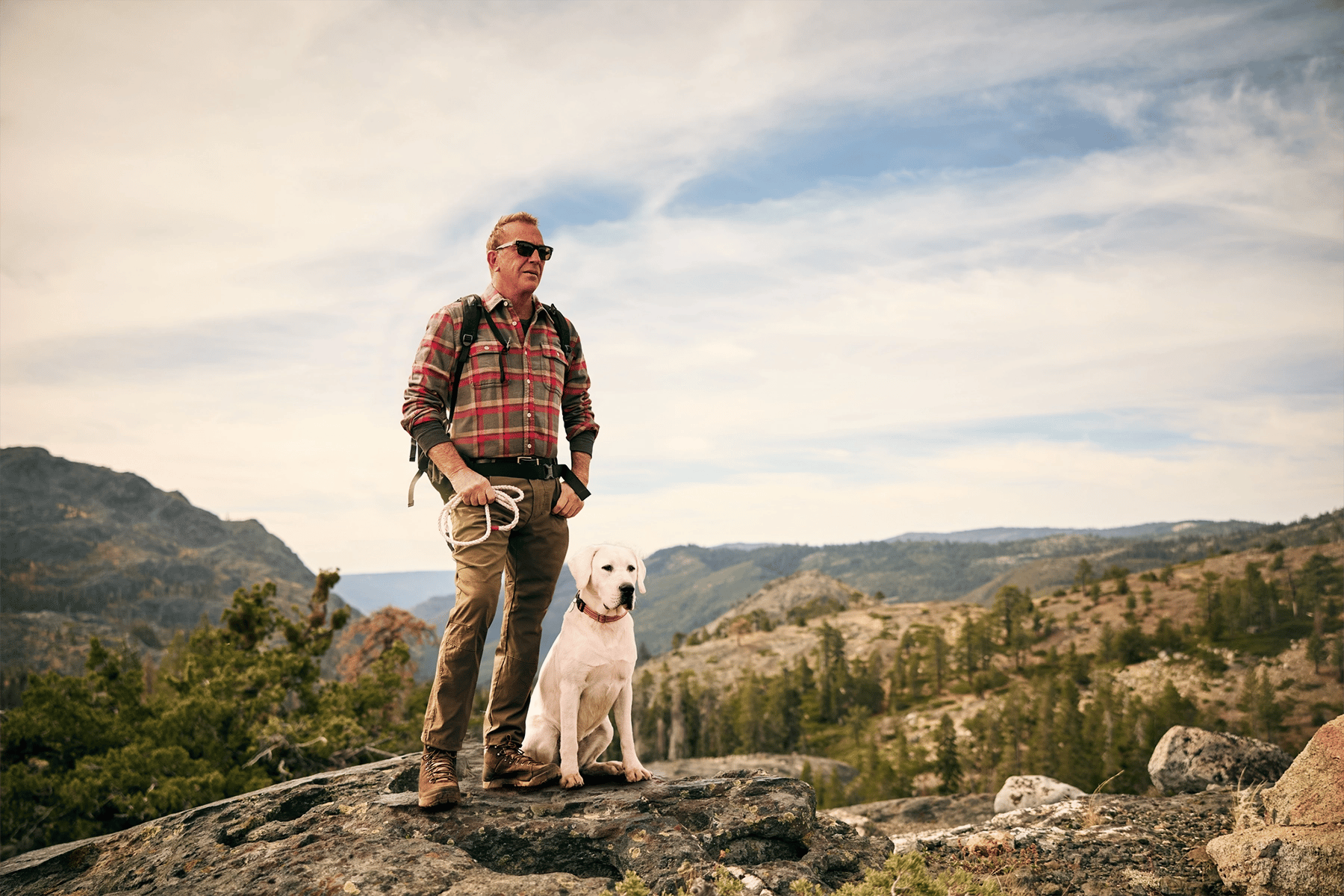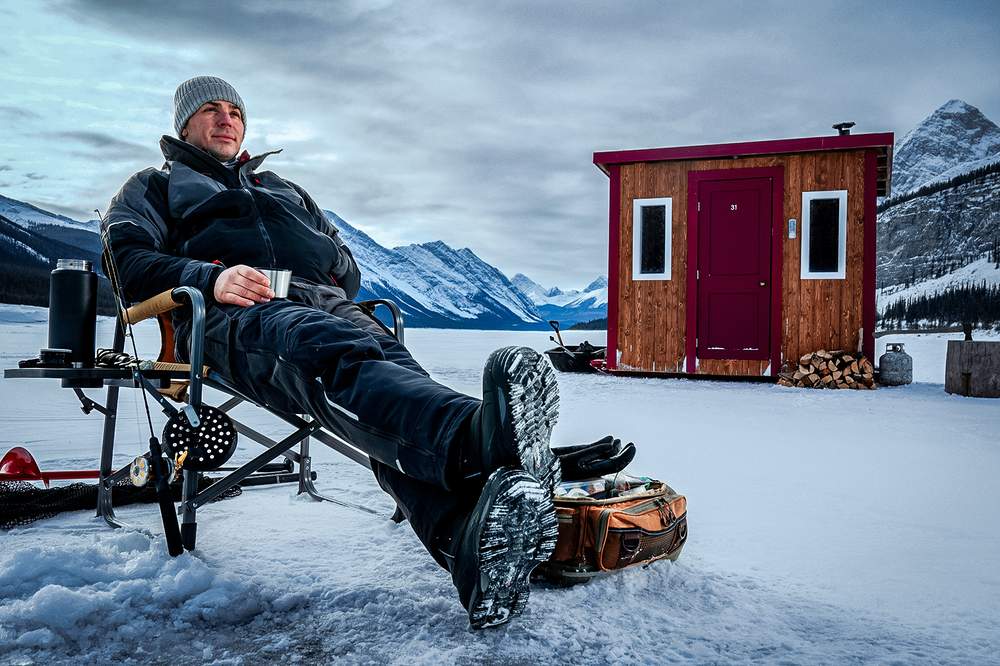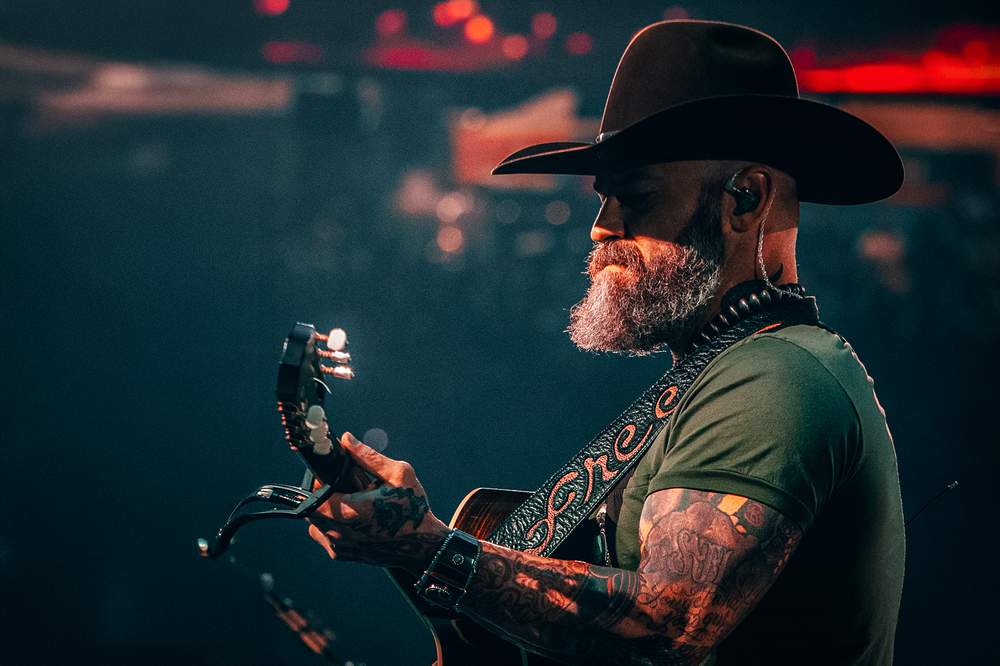Click to listen to the audio version of this article.
The names "Kevin Costner" and "Yellowstone" go together like Forrest Gump’s proverbial peas and carrots. If you haven’t been hiding in a bunker for the past several years, Oscar and Emmy winner Costner portrayed John Dutton III as he led the Yellowstone Dutton Ranch family in the smash hit drama Yellowstone, which ran for five seasons.
Far fewer people, however, are aware of Costner’s profound love for America’s national parks—Yellowstone at the top of the list—and the history that resides within each of those remarkable areas of publicly owned land.
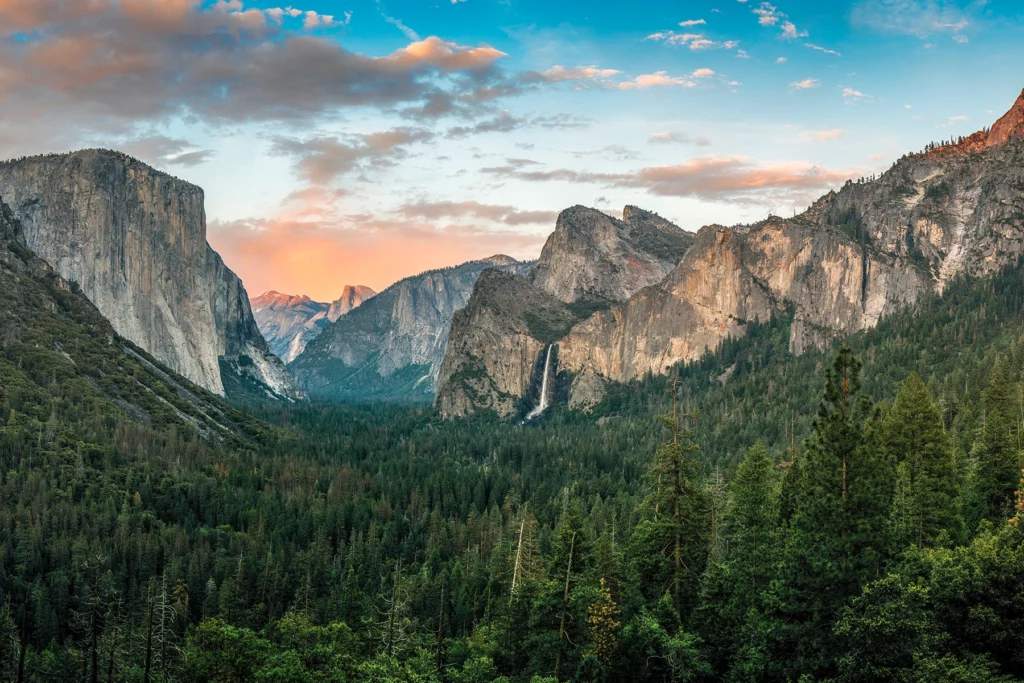
That brings us to Fox Nation’s hit show Yellowstone One-Fifty with Kevin Costner, last year’s four-part series celebrating the breathtaking park’s 150-year history. Starting this year, the follow-up, Yellowstone to Yosemite with Kevin Costner, focuses on Yosemite National Park, the site where the National Park system was born. In the first episode, Costner explores the vast wilderness of Yosemite National Park while delving into the story of Theodore Roosevelt’s three-day camping trip in a blinding snowstorm that changed America forever.
In the second episode, Costner retraces the journey of Roosevelt and John Muir in Yosemite as he examines the tragic and triumphant life of the man behind the American conservation movement.

The programs originated from the creative minds of Costner and producer Marc Pierce of Warm Springs Productions, based in Missoula, Montana. Both share a profound love for the outdoors and American history, which I believe lends the programs the authenticity that makes them essential viewing for Hook & Barrel readers.
How The History Comes To Life
“Kevin and I got acquainted a number of years ago, and I was so impressed with his passion for history—American history, especially,” Pierce said in an exclusive interview with Hook & Barrel. “I love history, I love producing shows about history, and I talked to him about what I would call classic rock stories of history, whether it was the Civil War, World War II, or whatever. It was somewhat known to me how this guy, Ferdinand Hayden, was responsible for the formation of Yellowstone Park and the beginning of the park system. I shared that story with Kevin, and he said, ‘Man, I could get on board with that.’ So we did it, and it was very successful.
“People loved it. Kevin did a great job because he’s personally attached to it; it’s not just like a gig. He loves these stories, so we started digging for something to follow that up with and came up with Teddy Roosevelt and John Muir.”

Pierce said what sets these shows apart—and what sets Costner apart on the programs—is the star is personally invested in the stories, which makes them more interesting to everyone who views the series.
“Nobody said, ‘Hey, let’s do a show. Let’s figure out what it’s going to be about,’” he said. “As you can imagine, Kevin gets pitched so many projects. The scripted things are a whole different ballgame. But when it comes to unscripted and storytelling based on history, he falls in love with stories, and that’s kind of what happened here.
“Obviously, he knew a little about it, but then I started teasing out how profound it was that these two men came together and overnighted in the park. He was the president, and there wasn’t a lodge. There was deep snow, and it’s crazy that it even happened. Kevin’s response was, ‘Oh, man, I like this a lot.’ And he’s at a fortunate place in his career where he’s only going to do things that he’s personally passionate about. That’s what drives him, and that’s what makes him so good when the green light on the camera goes on.”
Why The National Parks Are In Kevin Costner’s Blood
Superstar Costner’s deep love for America’s national parks didn’t just begin with the Fox Nation programs. He still has fond memories of his very first visit to a national park as a child.
“My first park was the Sequoia, where trees were as large as the famous picture shows that a car can drive through it, and I was little,” he said. “If you could think back in your own life when you remember your bedroom or your backyard being huge, and you go back to it as an adult and, of course, it’s very, very small. As a small child, I thought to myself, ‘My God, this is the biggest thing maybe I have ever seen in my life, so big that even a car can drive through it!’ I was lucky. Do you realize that? I was lucky that someone had made a decision along the way to protect this.
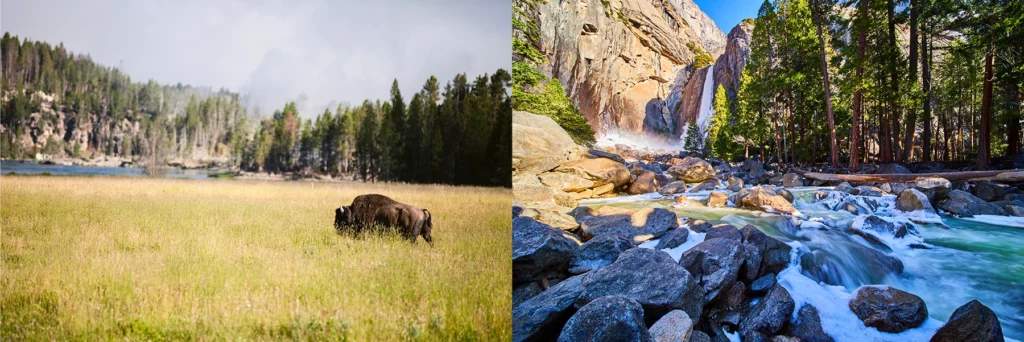
“Otherwise, it would have been gone. My whole essence of how I have lived my life was formed from being in these wild places. And these wild places needed protection. They’re like a patient that can’t speak for itself. Someone had to speak for it. John Muir had to speak for it. Ferdinand Hayden had to speak for it. Teddy Roosevelt had to stand for it.”
Costner also recalled the first time he saw Yosemite Valley, arguably one of the most beautiful places in the United States.
“There was something about Yosemite that, when you first arrived, you come around a corner or you come through a tunnel,” he said. “I remember, if Alice looked through the looking glass, I came through a tunnel and saw maybe the most beautiful place I have ever seen in my life, this valley of stone surrounding it, protecting it, this rush of water that looked like it was just hurling out of the mountain.
“I’d never seen anything so beautiful. And, again, you have to stop and say, somebody protected this.”
For his part, Costner said that from the very beginning, he was fully on board with the project.
“I tell you, the reason I wanted to be a part of this story, starting even with Yellowstone, was because they’re a part of our DNA,” Costner said. “They’re part of our fabric. And the reality is, we don’t even know the struggle, the inspiration, the guts, what was at risk for those who thought to do something differently.
“We know Ferdinand Hayden, going into Yellowstone, was there to destroy it, to find a path for a railroad, to look for gold. And what he went through is something that we just don’t know about as Americans, that this single young man was struck by something bigger.”
Costner’s deep understanding of the history of both Yellowstone and Yosemite gives him a keen insight into exactly what transpired as conservationist John Muir sought to persuade President Roosevelt to visit Yosemite. This was no small task, as traveling across the country and into remote areas like Yosemite Valley was quite difficult at the time.
“That’s what nature does,” Costner said. “Part of the awe that comes from being in Yosemite. Part of what Muir understood so clearly was if he could just get Teddy there—into this spot on El Capitan, to see what he saw—that Teddy would change the trajectory of the National Park System that had fallen into disarray. Yellowstone was this beautiful idea, but all the mechanics, all the actual fundamentals of having the Park System work, weren’t in place. And it would require a law because people were still rummaging around these incredible, beautiful places doing things that had to be stopped.”
As it turned out, Muir was correct. Roosevelt visited Yosemite, experienced its grandeur, and set the wheels in motion for something we all enjoy today.
“For 30 years, Yellowstone was being kind of ravaged still on a slight level,” Coster said. “But Teddy created not only the national forests and the five national parks, he got this infrastructure that was designed to protect the system. I wanted to be a part of telling their story, which has become so important to me as a man that I can now bring my children to these places, and they will be able to bring their children to these places. I want to do my part, my small part, for what these men risked so long ago.”
Taking On The Tough Stuff
Similar to the history of much of the western United States, the history of national parks encompasses the extensive displacement of native tribes and their peoples who inhabited many of the parklands. That’s an issue that Pierce and Costner didn’t shy away from in making the programs.
“Our fingerprints as Americans are all over our mistreatment of the first people that inhabited America,” Costner said. “And I’m not afraid to be a part of that story—I am not afraid to tell it. I don’t think that I am somebody that is reinventing history; I don’t think I am somebody that has been put here to teach it. I just wanted to be part of the story because I wanted it to stay alive, that our national appetite has been at the expense of other people.”
Ultimately, however, Costner’s message through the programs is one of gratitude that, decades ago, some forward-thinking Americans took the necessary steps to ensure we can all enjoy our National Parks.
“But the second half of the story is that it was so beautiful that I could see it as a child untouched, the same way the first people lived it for 7,000 years,” he said. “I never know how to make sense of this story, but I know one thing: I thank God that Yosemite is the way God created it. And it still is.”
Author’s Note: Hook & Barrel readers can enjoy Yellowstone One-Fifty with Kevin Costner and Yellowstone To Yosemite with Kevin Costner by visiting foxnation.com. We assure you both series are well worth whatever nominal fee Fox Nation might charge you for access to the programs.
Quick Guide To Fishing In America’s National Parks
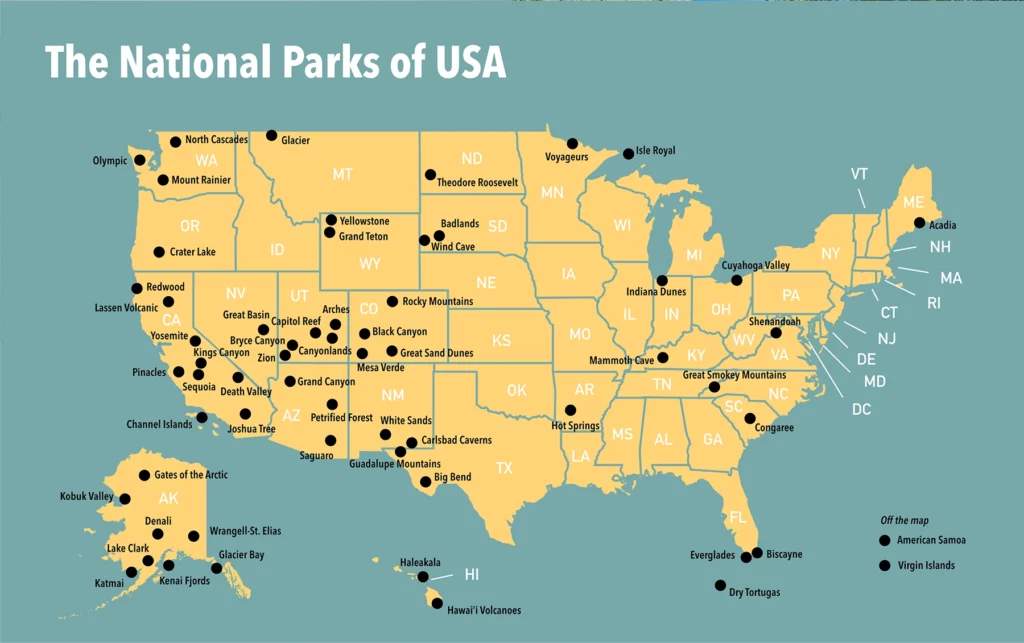
When visiting America’s 63 national parks, don’t forget to bring your fishing rod. Most parks offer at least some fishing opportunities for those looking to wet a line while on vacation.
Yosemite, Yellowstone & Grand Teton
Last year alone, my wife and I visited three National Parks—Yosemite, Yellowstone, and Grand Teton. While our brief time in Yosemite didn’t allow for fishing, I thoroughly enjoyed the angling opportunities at both Yellowstone and nearby Grand Teton. Both locations offer excellent fishing with some of the most incredible views you could ever imagine. In fact, I spent my birthday fishing in a high mountain stream in Yellowstone with a fly rod that my grandmother bought with S&H Green Stamps and gave me 50 years earlier to the day. It was an outing I’ll never forget!
Great Smoky Mountains, Shenandoah
Note that fishing opportunities in National Parks are not limited to the western part of the country. Great Smoky Mountains National Park, which straddles the border between North Carolina and Tennessee, boasts 2,900 miles of streams featuring abundant wild trout habitat. Shenandoah National Park in Virginia is also renowned for its trout fishing and contains over 90 mountain streams and their minor tributaries that serve as high-quality sources for three of Virginia’s 10 major drainages: Potomac, Rappahannock, and James. Over 70 of these streams contain fish, and most of them are home to native brook trout.
Dry Tortugas, Acadia
Additionally, those who prefer saltwater angling shouldn’t overlook the excellent fishing opportunities that National Parks have to offer. Dry Tortugas National Park, located roughly 70 miles offshore from Key West, Florida, is a haven for both shallow and deep sea-dwelling fish. Furthermore, while Acadia National Park in Maine is known for its freshwater fishing, it also provides saltwater fishing opportunities for cod and pollock.
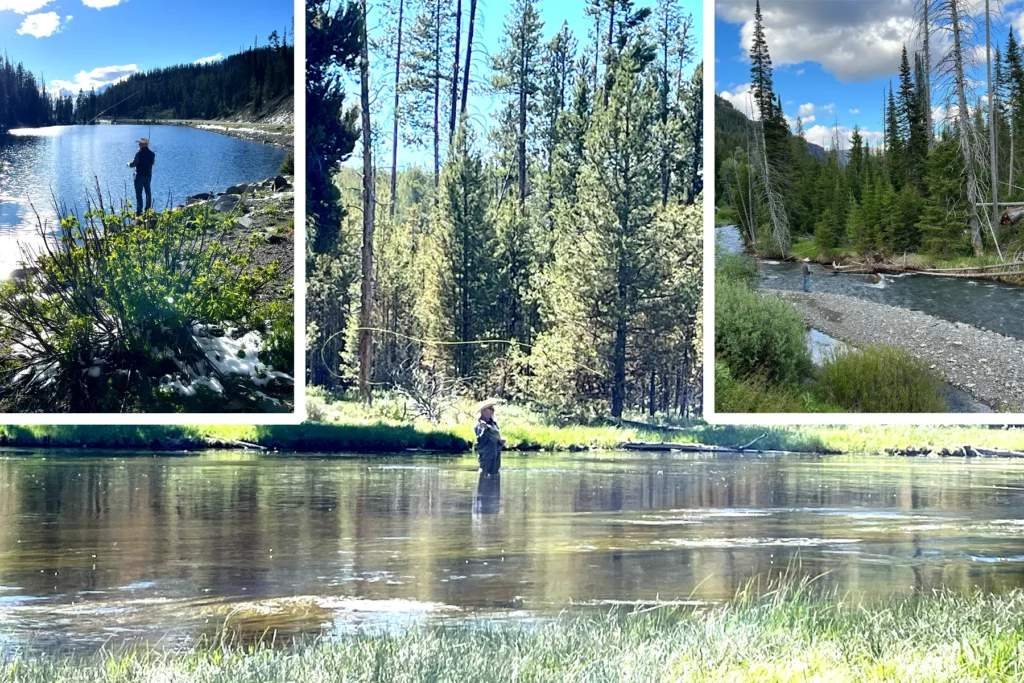
Rules & Regulations For Fishing in National Parks
Fishing regulations in National Parks can be somewhat confusing, so do some research before you go. Some parks require permits solely for fishing in the park, others allow fishing with a state fishing license, and some require both. Additionally, various waters across different parks might be open for fishing, while others may be closed depending on the time of year.
Yellowstone can be particularly confusing. Along with permit requirements, anglers must release some species caught while being required to kill all fish of other species that are considered invaders to the area’s native Yellowstone Cutthroat Trout. It can become even more confusing when you consider that many of the park’s workers are seasonal; frankly, some don’t know any more about the fishing regulations than you likely do. I asked an employee at a Yellowstone Visitors Center a question about fishing, and then I asked the same question of a park employee in the fishing tackle section of the gift shop and received two completely different answers. All that is to say, be sure to check the fishing regulations at each park where you decide to cast a line. Your trip will be much more enjoyable if you don’t accidentally run afoul of the regulations.
